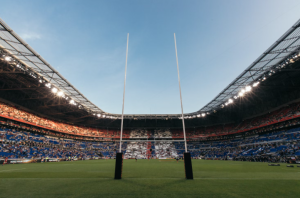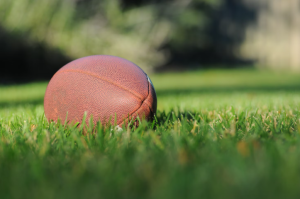Mascots have long been a staple of sports culture, adding an extra layer of entertainment and fan engagement to games. In the National Football League (NFL), these colorful characters range from animals and mythical creatures to historical figures. This article aims to explore the various mascots associated with NFL teams, delving into their origins, roles, and unique characteristics.
The Role of Mascots in the NFL
Mascots serve multiple functions in the NFL, from rallying fans to participating in community events. This section will explore the various roles that these characters play both on and off the field.
Fan Engagement
Mascots are primarily designed to engage fans, especially younger audiences. They are often seen leading cheers, interacting with the crowd, and even engaging in playful antics to keep the energy high during games.
Community Outreach
Beyond the stadium, mascots often participate in community events, charity functions, and educational programs. For example, some mascots visit schools to promote literacy or healthy living, serving as ambassadors for the team and the sport.
Branding and Merchandising
Mascots also serve a commercial purpose. They are often featured on a range of merchandise, from clothing to toys, enhancing the team’s brand and providing an additional revenue stream.
Digital Presence
In the age of social media, many mascots have their own Twitter or Instagram accounts, further extending their reach and engagement with fans.
Mascots in the NFL serve a multifaceted role, engaging fans during games, participating in community outreach, contributing to team branding, and maintaining a digital presence.
A Glimpse into Notable NFL Mascots
The NFL boasts a diverse array of mascots, each with its own unique backstory and characteristics. This section will highlight some of the most notable mascots in the league.
Table: Notable NFL Mascots
| Team | Mascot | Description |
|---|---|---|
| Baltimore Ravens | Poe, Rise and Conquer | Poe is named after Edgar Allan Poe and is accompanied by two real ravens, Rise and Conquer. |
| Denver Broncos | Miles, Thunder II | Miles is a white, horse-like figure, while Thunder II is an actual Arabian horse. |
| Philadelphia Eagles | Swoop, Air Swoop | Swoop is an eagle-like figure, and Air Swoop is an air-filled caricature similar in appearance. |
| Seattle Seahawks | Blitz, Boom, Taima | Blitz and Boom are large blue anthropomorphic birds, while Taima is an augur hawk. |
| Washington Commanders | Major Tuddy | A pig inspired by The Hogs, Washington’s famed offensive line of the 1980s. |
The NFL is home to a wide variety of mascots, each contributing to the team’s identity and fan engagement in unique ways. From real animals like the Baltimore Ravens’ Rise and Conquer to caricatures like Philadelphia’s Air Swoop, these mascots add a layer of excitement and tradition to the league.
The Evolution of NFL Mascots
Mascots have evolved over the years, reflecting changes in team branding, fan expectations, and cultural trends. This section will examine how NFL mascots have changed over time.
Early Days
In the early years of the NFL, mascots were less prevalent and often not as elaborately designed as they are today. They were primarily used for promotional events rather than as a regular feature at games.
Modernization and Professionalization
With the growth of the NFL and advancements in costume design, mascots have become more sophisticated. Teams now invest in high-quality costumes, professional handlers, and even mascot training programs.
Cultural Sensitivity
As societal attitudes have evolved, some teams have rebranded their mascots to be more culturally sensitive. For example, mascots that were once based on ethnic stereotypes have been redesigned or retired.
NFL mascots have undergone significant changes over the years, evolving from simple promotional tools to complex characters with multiple roles. This evolution reflects broader changes in the league and society, including advances in branding and a greater focus on cultural sensitivity.
Thus, in the world of the NFL, mascots serve as more than mere sideline entertainment. They are integral to fan engagement, community outreach, and team branding. Over the years, these characters have evolved to meet changing societal norms and fan expectations, becoming beloved figures in their own right. Whether they are rallying fans at a crucial moment or serving as ambassadors in the community, NFL mascots add a unique and indispensable layer to the game-day experience.



